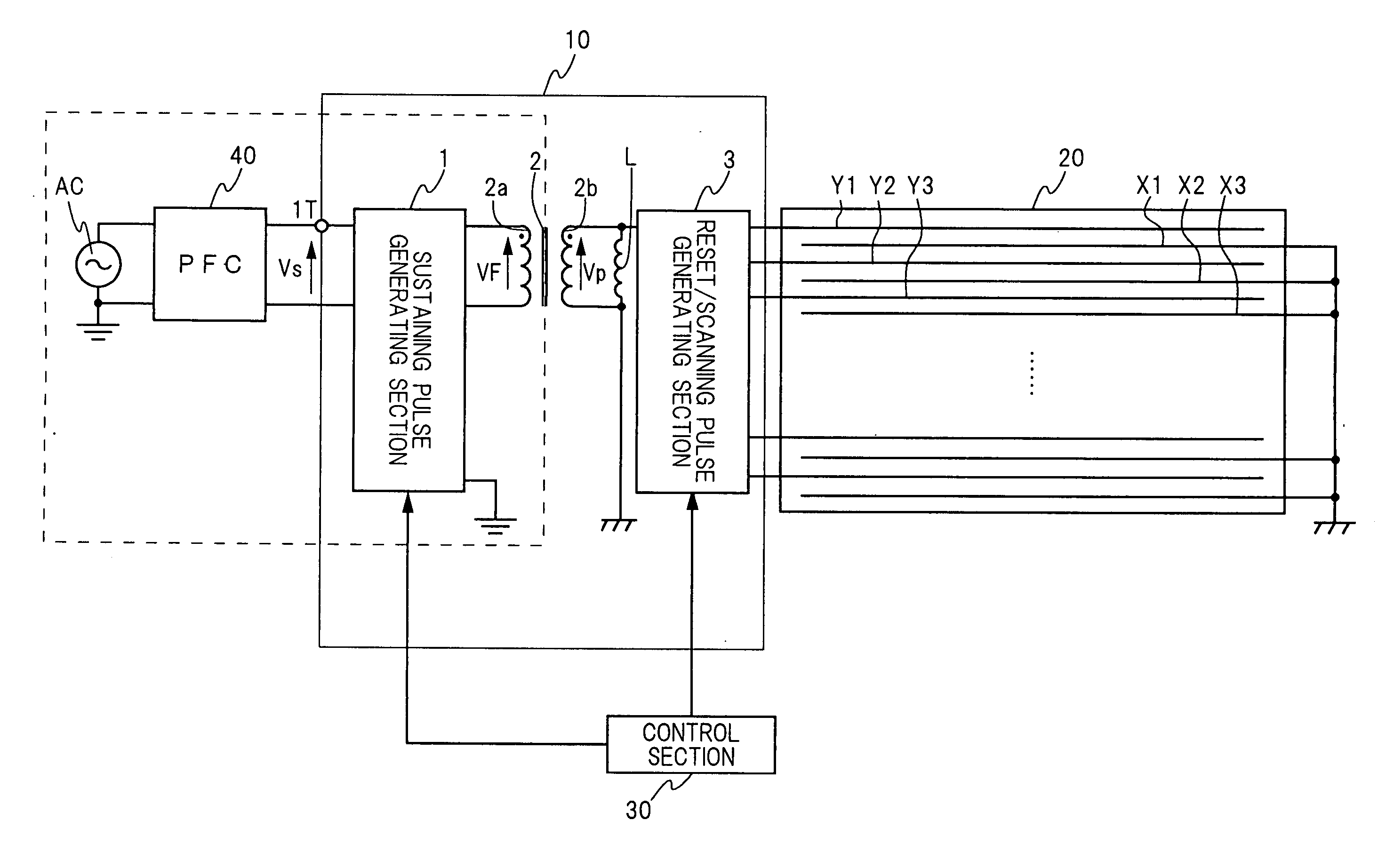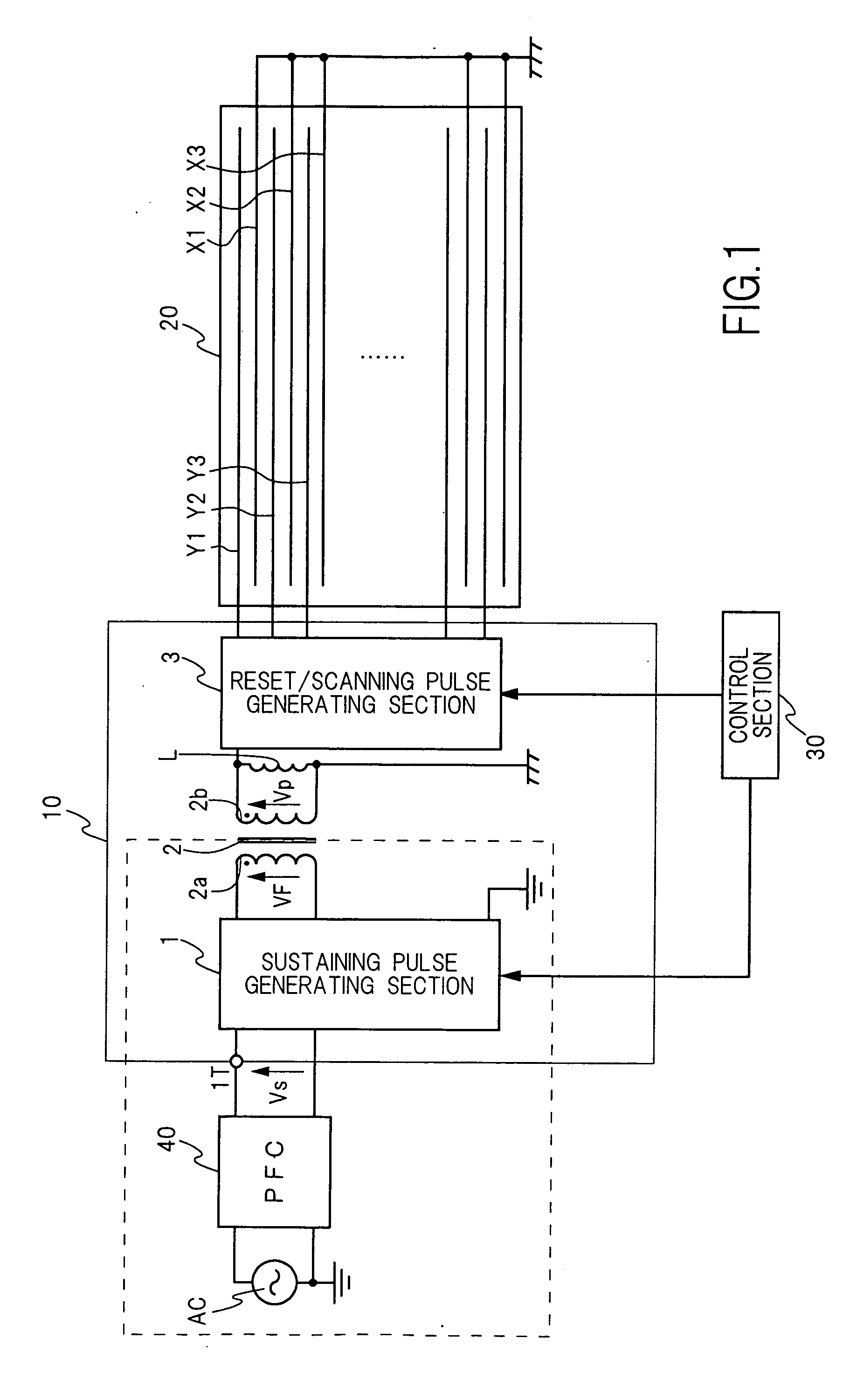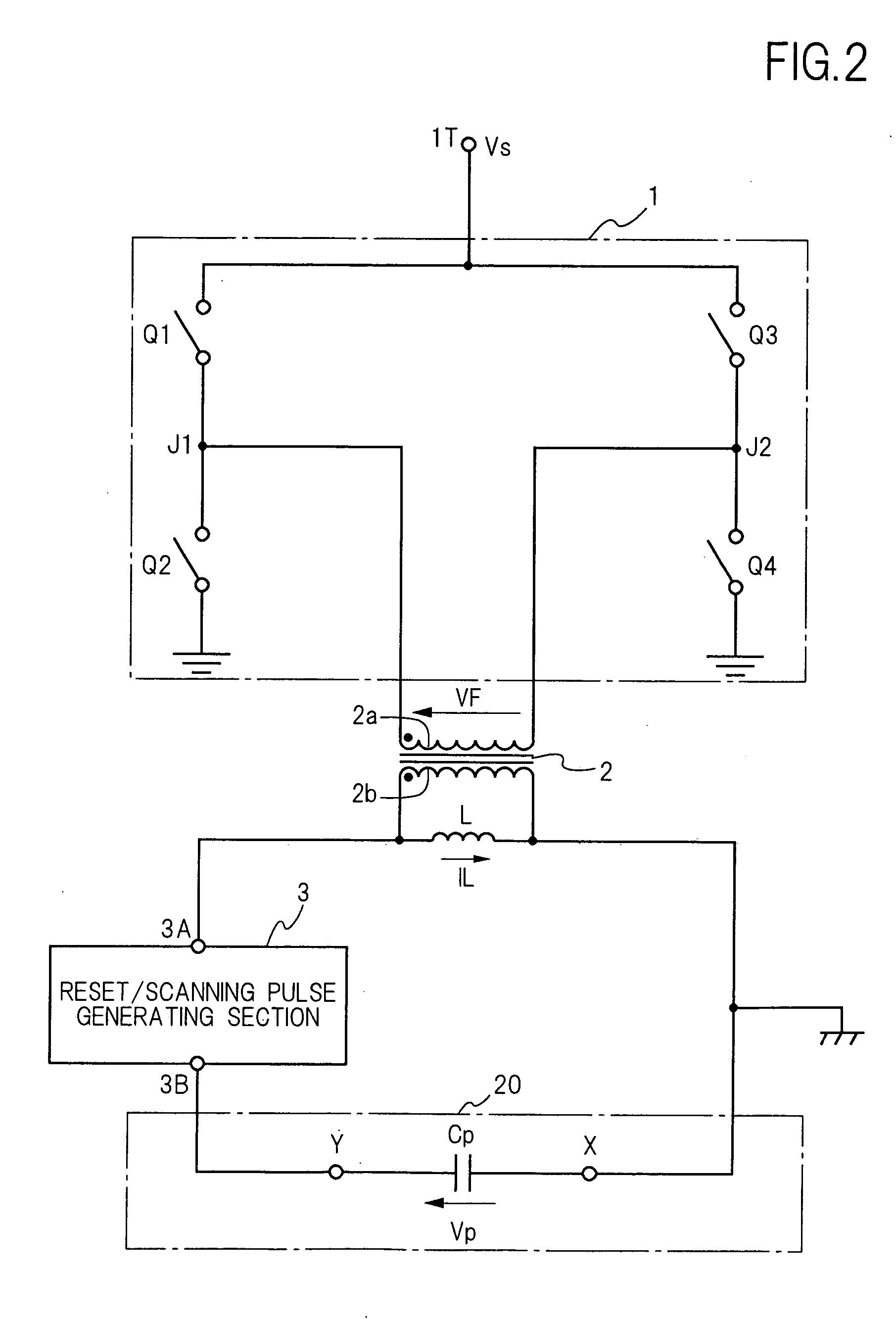Capacitive load driver and plasma display
a capacitive load and driver technology, applied in static indicating devices, cathode-ray tube indicators, instruments, etc., can solve the problems of screen upsizing, increased reactive power of screen devices, and hindered slimming-down and miniaturization, so as to reduce the total power consumption of the system including the load, reduce the reactive power, and avoid adverse effects on the other circuit parts
- Summary
- Abstract
- Description
- Claims
- Application Information
AI Technical Summary
Benefits of technology
Problems solved by technology
Method used
Image
Examples
embodiment 1
[0124]FIG. 1 is the block diagram which shows the configuration of the plasma display according to Embodiment 1 of the invention.
[0125] The plasma display comprises a PDP 20, a PFC converter 40, a PDP driver 10, and a control section 30.
[0126] The PDP 20 is preferably an AC type and comprises a three-electrode surface-discharge type structure. Address electrodes (not shown) are arranged on the rear substrate of the PDP 20 in the vertical direction of the panel. Sustain electrodes X1, X2, X3, . . . and scan electrodes Y1, Y2, Y3, . . . are alternately arranged on the front substrate of the PDP 20 in the horizontal direction of the panel. The sustain electrodes X1, X2, X3, . . . , are connected to each other, and thereby, maintained at a substantially equal potential. The address electrodes and the scan electrodes Y1, Y2, Y3, . . . each allow the separate potential changes.
[0127] A discharge cell (not shown) is installed at the intersection of a pair of sustain and scan electrodes ...
embodiment 2
[0193]FIG. 6 is the block diagram which shows the configuration of the plasma display according to Embodiment 2 of the invention. In FIG. 6, the components similar to the components shown in FIG. 1 are marked with the same reference symbols as the reference symbols shown in FIG. 1. Furthermore, for the details of the similar components, the explanation about Embodiment 1 is cited.
[0194] This plasma display comprises a PFC converter 40, a PDP driver, a PDP 20, and a control section 31. The PDP driver includes a first driver section 10Y and a second driver section 10X.
[0195] The first driver section 10Y includes a first sustaining pulse generating section 1Y, a first transformer 2Y, a first inductor LY, and a reset / scanning pulse generating section 3Y. The second driver section 10X includes a second sustaining pulse generating section 1X, a second transformer 2X, a second inductor LX, and a reset pulse generating section 3X. Here, the reset pulse generating section may be included o...
embodiment 3
[0234]FIG. 10 is the block diagram which shows the configuration of plasma display according to Embodiment 3 of the invention. In FIG. 10, the components similar to the components shown in FIG. 1 are marked with the same reference symbols as the reference symbols shown in FIG. 1. Furthermore, for the details of the similar components, the explanation about Embodiment 1 is cited.
[0235] This plasma display comprises a PFC converter 40, a PDP driver, a PDP 20, and a control section 32. The PDP driver includes a first driver section 10A, a second driver section 10B, and a reset / scanning pulse generating section 3. The first driver section 10A includes a first sustaining pulse generating section 1A, a first transformer 2A, and a first inductor LA. The second driver section 10Ba includes a second sustaining pulse generating section 1B, a second transformer 2B, and a second inductor LB.
[0236] In this plasma display, each of the secondary windings 2bA and 2bB of the two transformers 2A an...
PUM
 Login to View More
Login to View More Abstract
Description
Claims
Application Information
 Login to View More
Login to View More - R&D
- Intellectual Property
- Life Sciences
- Materials
- Tech Scout
- Unparalleled Data Quality
- Higher Quality Content
- 60% Fewer Hallucinations
Browse by: Latest US Patents, China's latest patents, Technical Efficacy Thesaurus, Application Domain, Technology Topic, Popular Technical Reports.
© 2025 PatSnap. All rights reserved.Legal|Privacy policy|Modern Slavery Act Transparency Statement|Sitemap|About US| Contact US: help@patsnap.com



